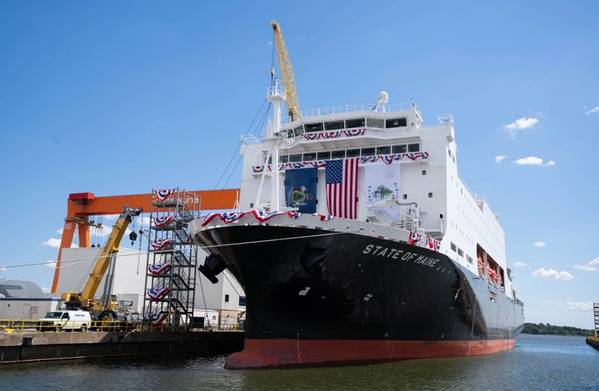
The following is an op-ed Jeff Vogel, Vice President of Legal for TOTE Services, wrote for InsideSources.com. The views expressed here are those of the author and do not necessarily reflect the views of the publisher.
President Donald Trump’s call for new investment in U.S. shipbuilding comes at a pivotal moment. From icebreakers to training ships, America faces rising demand for vessels even as foreign competitors pour billions into their own yards. But there has been significant concern about how America can keep up.
Government shipbuilding programs have fallen behind due to decades of problems: Congress’s failure to pass sustainable budgets, reliance on Continuing Resolutions, burdensome red tape, and inefficient management processes. Too often, these programs suffer from being too close to their customers, which can cause a shipyard to devote resources to compliance rather than vessel construction. This has led to a lack of capacity for our sea services and government research arms.
That’s why Congress and the Maritime Administration turned to a new model to manage the construction of the National Security Multi-Mission Vessels (NSMVs) in Pennsylvania’s Hanwha Philly Shipyard. The Vessel Construction Manager approach has worked for ships like the recently christened NSMV State of Maine.
Instead of the government micromanaging every step and creating an extra burden on shipyards, a private contractor oversees the process using commercial best practices, while the shipyard focuses on what it does best: building ships.
The results have been undeniable: these training ships are being delivered on schedule, at an average cost of about $300 million per vessel—far below the nearly $1 billion estimates from traditional processes. The vessels then move on to America’s maritime service academies, which are being put in the spotlight for the life-long, well-paid careers in the maritime industry that cadets can pursue as engineers, mates, seamen, and officers.
The benefits reach far beyond the ships themselves. At Pennsylvania’s Hanwha Philly Shipyard, the NSMV program has helped grow the workforce from fewer than 50 employees in 2020 to over 1,500 today. An apprentice school is now training the next generation of shipbuilders, creating opportunities for young people in Pennsylvania to pursue high-paying careers in the trades. In fact, Pennsylvania ranks 13th among all states in domestic maritime employment, with 14,810 jobs and an annual economic impact of $3.39 billion, as well as over $1 billion in worker income that has supported the state’s past budget surpluses.
And Pennsylvania is not alone. States like Virginia, Louisiana, Texas, and Washington also host major shipyards that support both government vessels and commercial Jones Act fleets. Altogether, America’s shipyards sustain nearly 400,000 jobs nationwide and generate more than $42 billion in GDP each year. Every region with a yard has a stake in ensuring U.S. shipbuilding remains competitive.
Now, with more than $48 billion in new federal shipbuilding funds for our warfighters recently appropriated in President Trump’s One Big Beautiful Bill, Washington faces a choice. If these projects follow the old, bureaucratic model, overruns and delays are all but guaranteed. But if we scale the VCM approach across our projects, we can deliver more ships, on budget and on time, while revitalizing our shipyards and workforce just like what has been done in Pennsylvania.
America’s allies are investing in their shipyards at record levels. South Korean firms are expanding capacity for LNG carriers and defense vessels. Japanese shipbuilders are partnering globally to secure their role in the clean energy transition. As well, our primary adversary on the global stage, China, is consolidating its shipyards to dominate global orders. The U.S. cannot afford to sit still.
The path forward is clear to undo decades of neglect; shipyards need a predictable demand signal and investments to create the skilled workforce that keeps America competitive. By doing so, we will not only put more American ships in the water—we will also secure the industrial base, the jobs and the national security that come with them.



